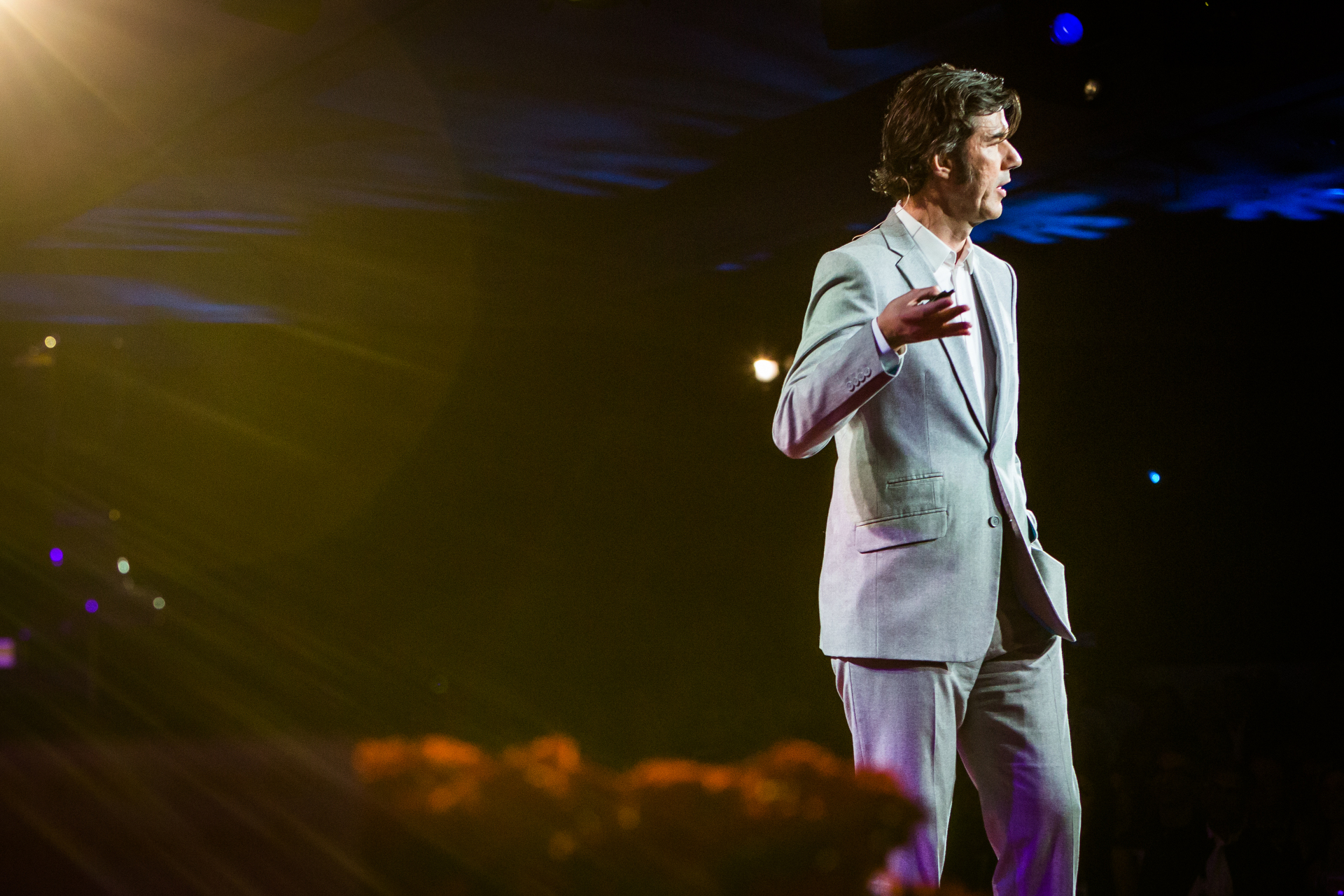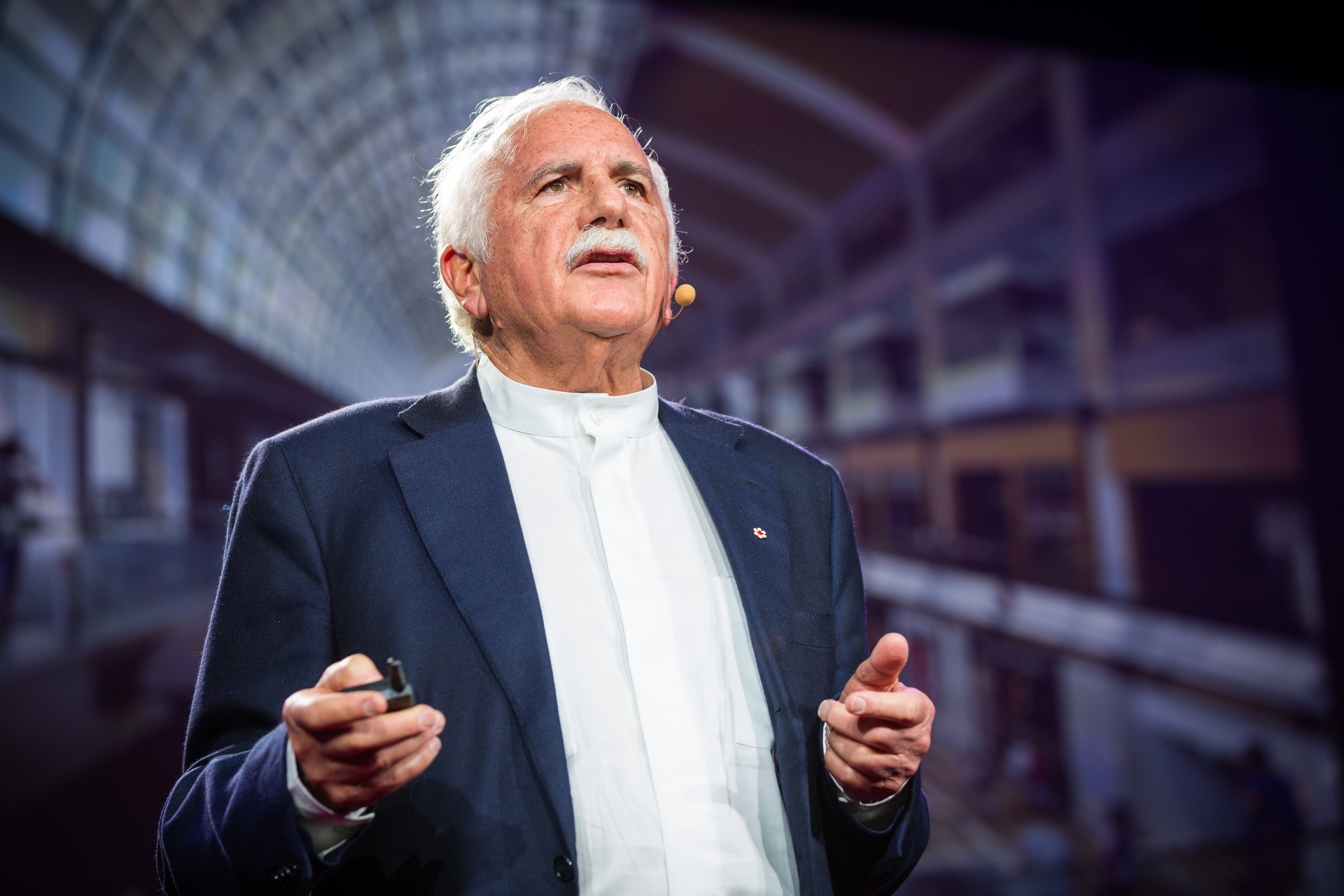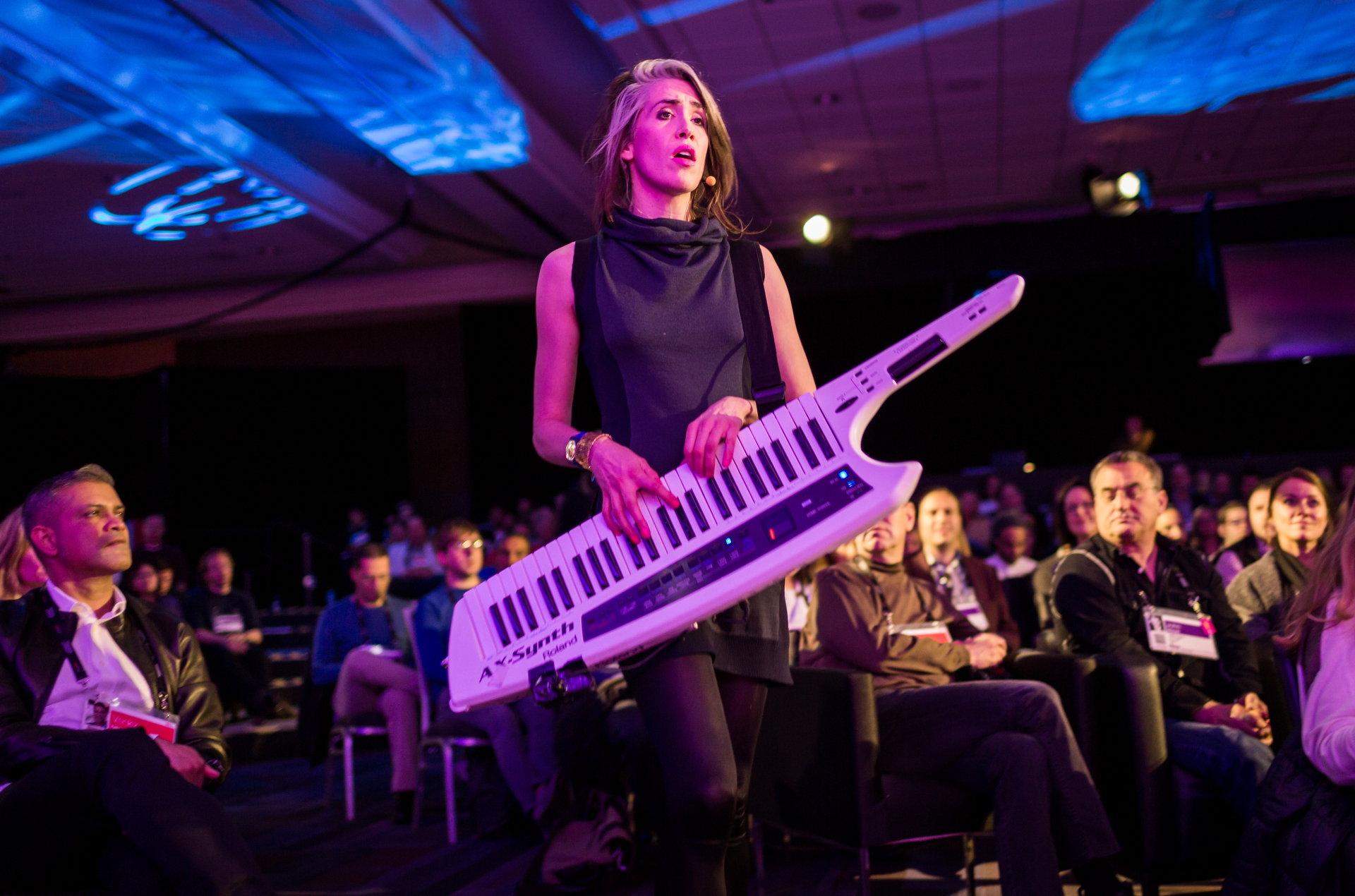By Liz Jacobs and Helen Walters
It’s often said that good design is invisible design — it makes things easy and delightful without us realizing it. But as host Chee Pearlman reminds us at the top of the session, we’re here to honor the “D” in “TED.” From the artistic to the architectural to the auditory, the eight speakers in this All-Stars session have all contributed in their own way to making the world a more interesting and beautiful place.
Below, read a detailed recap of each talk given in this session:
“People think of design like doughnuts–excessive, sweet and kind of irrelevant sometimes.” John Maeda was president of RISD for six years, but he recently packed up and headed west to work at VC firm Kleiner Perkins to define design in the context of technology and business. He’s living in an Airbnb, living off a lot of doughnuts — and meeting a lot of design talent in the Valley. His conclusion? “Technology is not enough; design matters even more now.” This is a change from the olden days; in 2014, everything is friendly, everything is superfast, everything can say hello to us. So do we actually need it? Turns out: design is the reason we want to buy things. “Right now is a golden age where the economic impact of design is going to be true,” he concludes. “You need design from the beginning.”
15 years ago, designer Stefan Sagmeister ran into TED founder Richard Saul Wurman at Tokyo’s Narita airport. After discussing their seating assignments — Richard in First Class, Stefan in economy — Sagmeister went off to the bookstore. When he came back, he found that his seat had been upgraded to 1B — the seat next to Richard’s. How did Wurman do this? Well, Richard had told the airline hostess that he had just found his long-lost son, and the only way for them to reconnect was to sit next to each other on the 14-hour flight. During their long journey, Richard shared the single sentence on which he built all of TED: “If I don’t ask, I won’t get.” Sagmeister re-creates the phrase in gorgeous, multi-media typography.
Architect Moshe Safdie asks us to reflect on how the issues facing urbanism and architecture have changed in the last few decades. In 1960, he traveled through North America to study public housing, looking at high-rise buildings in New York and Philadelphia — and suburbs where people really chose to live. This, he thought, was unsustainable — and it started Safdie on a path of thinking about issues of nature and home. Since then, he’s seen high-rise buildings shoot up around the world, as cities such as Beijing, Shanghai and S`ao Paulo are transformed by congestion, a loss of mobility, all while losing access to what makes housing bearable or perhaps even pleasurable. “100 years after we began building with tall buildings, we’re yet to understand how the tall high rise building becomes a building block in making a city,” he says, showing the Marina Bay Sands project in Singapore — complete with 2.5 acre running track on the roof.
“Poetry is like pooping,” starts poet Sarah Kay. “If there’s a poem inside you, it has to come out.” Since sharing her transformative spoken word poems at TEDxEast and TED2011, Kay has traveled the world, using her new global platform to share her voice and advocate poetry in places as far as India, Nepal, Singapore, Australia, Ghana, Mexico, and across Europe and the US. She’s working to make poetry more accessible, to take it off the pedestal and make it more human. “Poetry belongs to us, is for us, is from us.”
We’re living in an increasingly connected world, and researcher Pattie Maes is thinking about what that means for physical objects — and for humanity. “What bothers me about this is the smart world is largely fragmented and incomprehensible to people,” she says, as she begins to describe some of the projects that she and her team are working on at MIT. That includes a radio whose behavior is changed via a phone or a tablet, or a way to control all of the lights in a room with one simple controller. Or how about connecting objects to the smart grid? That way you can program your drier to run when the price of electricity is lowest. She has a number of examples, and concludes by showing one of her students, Valentin Heun, who connects personal real-time data to the environment around him, so the lights change color to reflect how successful he’s reduced his heart rate while meditating. “We call these ‘Smarter Objects’ that combine the best of digital world and physical world,” Maes concludes. “We hope this approach will make the Internet of Things a lot more transparent — and a lot more accessible to all.”
Society is undergoing an organizational shift, says futurist Juan Enriquez. This shift, caused by expanding and flattening networks, robots and 3D printing, will lead to five major changes in our social fabric:
1) Network forces will overwhelm corporations;
2) 3D printing and robots will decentralize manufacturing and design;
3) Very fast build/redesign;
4) Everything will cost $2/kg;
5) US/EU become low-cost manufacturing centers.
Sarah Kay comes back on stage with a less potty-mouthed story to perform a poem, “Toothbrush to the bicycle tire.” “It’s as close to contemplating design as I have in a poem,” she says. “It’s a love letter.”
In her previous talks, athlete and actor Aimee Mullins has shared designs of her own body parts. Today, she explains the mindset behind how she does it. “I designed my future by daydreaming it,” she says. “Daydreaming is the bridge between imagining and creating.” She encourages the audience to our set our hopes impossibly, unrealistically high and to expand the limits of what is possible. “I have never actually felt the ground beneath my feet, but I have wiggled my toes and flexed my ankles and I say ouch when someone steps on my feet,” says Mullins. “When these sensations become real for me, I will have already experienced them, because I have imagined them.”
Street artist and TED Prize winner JR bounces onto stage to explain why he doesn’t take sponsorship from brands, even though his projects have become more complex and more expensive. “When I do my work I have freedom. Brands have constraints, they have to test their messages. Brands cannot fail. Art can,” he says simply. “Art can only fail or surprise, and when art surprises it’s a real surprise, good or bad.” It’s not that JR doesn’t see the lure of advertising, or even that he thinks advertising cannot be interesting and artistic (he cites Annie Leibovitz, Andy Warhol, Cindy Sherman, even Wim Delvoye). But as he concludes, “an artist is not a brand. A brand is consistent and predictable. An artist is transforming time, not reflecting it, and our role is to be ever-changing and to challenge the status quo.”
Closing out the session is musician Imogen Heap, with a stirring version of her poignant “Hide and Seek.” She walks through the audience and accompanies herself on a keyboard synth to create an altered a cappella sound, and then transitions into a haunting cover of Jason Derülo’s “Whatcha Say.”



Comments